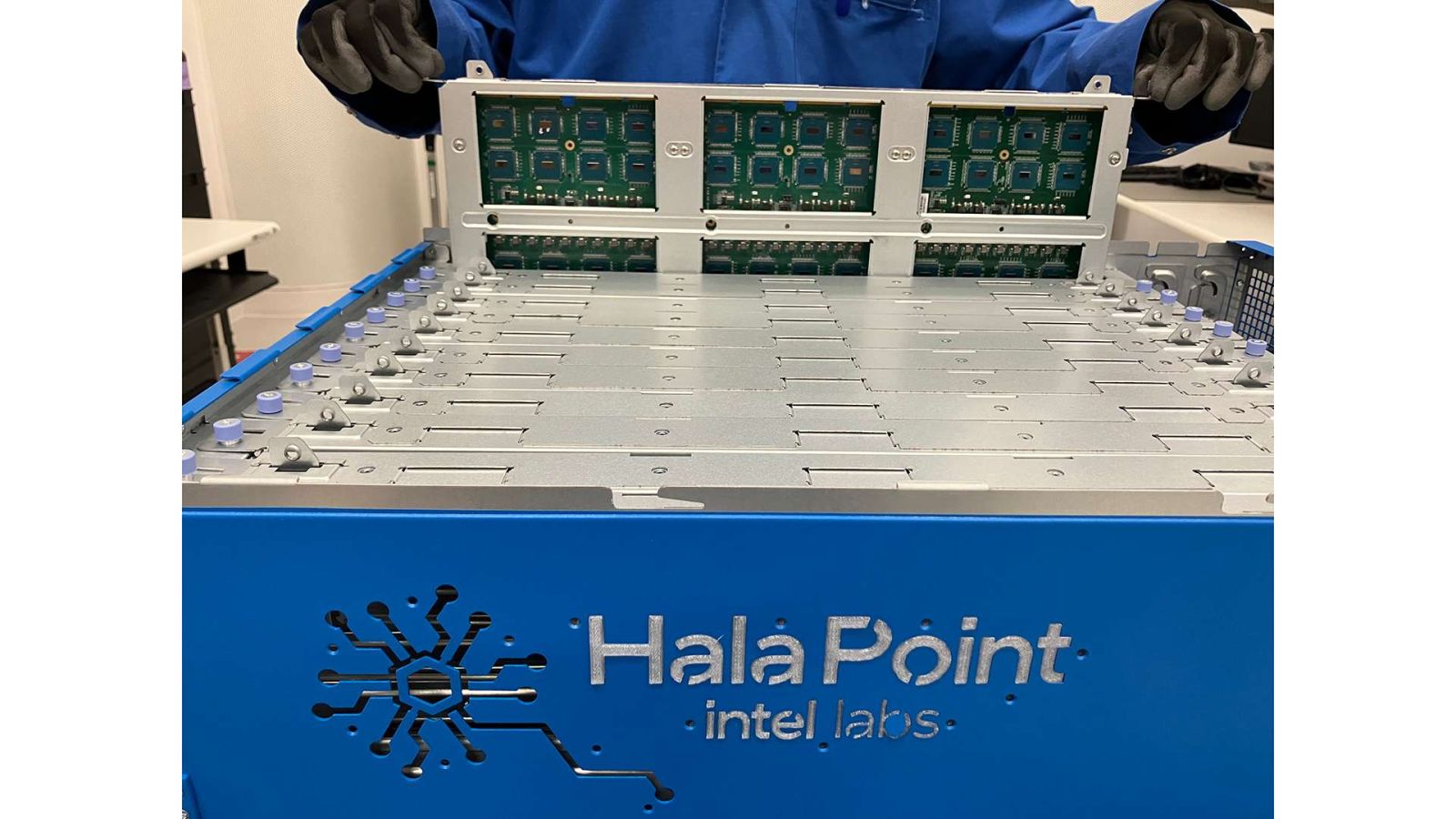Follow us on Google News (click on ☆)
This technological achievement represents a giant leap towards computing performances that are 50 times faster than those of equivalent traditional systems. This computer is designed to mimic the operation of the human brain, thus offering unmatched efficiency and speed.

Neuromorphic computing is distinguished by its approach, inspired by the human brain for data processing. Unlike conventional systems that process data sequentially, neuromorphic computing employs interconnected artificial neural networks, significantly accelerating information processing. Additionally, this approach integrates memory and computing power within the same processing units, eliminating communication bottlenecks between components and enhancing the overall energy efficiency of the system.
Hala Point is equipped with over 1,000 new specialized AI processors called Loihi 2, which operate with extreme efficiency. These processors can handle AI tasks up to 50 times faster than traditional computers, with an impressive capability of up to 20 quadrillion operations per second. The structure of Hala Point includes more than 1.15 billion artificial "neurons" and 128 billion artificial "synapses," comparable to the structure of the human brain.
What also sets Hala Point apart is its remarkable energy efficiency. This computer can perform up to 15 trillion operations with just one watt of energy, making it about 100 times more energy efficient than traditional systems.

Intel plans to use Hala Point at the Sandia National Laboratories in New Mexico to tackle complex problems in device physics, computer architecture, and computing. This initial use underscores Intel's commitment to exploring practical applications of this technology in critical areas of research and innovation.